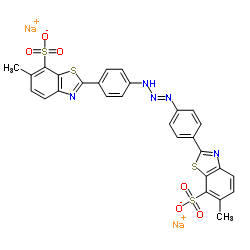Color quenching in "environmentally friendly" cocktails.
P J Meechan, V A Bhatt
文献索引:Health Phys. 73(5) , 808-13, (1997)
全文:HTML全文
摘要
Fluorescent and colored compounds used in molecular biology labs may generate color quench in wipe test samples taken from such labs. The ability of conventional chemical quench curves to correct for color quench caused by fluorescent and colored compounds in "environmentally friendly" cocktails has not been reported. Series of colored samples spiked with 3H or 14C were generated for three fluorescent compounds: ethidium bromide; Hoechst 33342; and fluorescein, and three colored compounds: thiazol yellow G; tartrazine; and a mixture of bromphenol blue and xylene cyanol. Three different "environmentally friendly" cocktails were used: one with a linear alkylbenzene solvent; one with a diisopropylnapthalene solvent; and a third with a phenylxylylethane solvent. The data, generated from two different liquid scintillation spectrometers that use different quench indicating parameters, suggest that the quench from the fluorochromes and colored dyes with moderate amounts of quench can be corrected by chemical quench curves. The data also suggest that the quench curve of diisopropylnapthalene-based cocktails is significantly different from the other "environmentally friendly" cocktails, when examined using tSIE as the quench indicating parameter.
相关化合物
| 结构式 | 名称/CAS号 | 分子式 | 全部文献 |
|---|---|---|---|
 |
钛黄
CAS:1829-00-1 |
C28H19N5Na2O6S4 |
|
Methods for the estimation of serum magnesium in clinical la...
1986-01-01 [Magnesium 5(5-6) , 317-27, (1986)] |
|
Studies on the presence of magnesium in visceral amyloid.
1994-11-01 [Zentralbl. Pathol. 140(4-5) , 309-15, (1994)] |
|
Molar absorptivity and the blank correction factor.
1985-03-01 [Clin. Chem. 31(3) , 462-5, (1985)] |
|
Resonance Rayleigh scattering spectra of tetracycline antibi...
2006-07-01 [Anal. Bioanal. Chem 385(6) , 1039-44, (2006)] |
|
[Microdetermination of proteins with Titan yellow by the res...
2005-06-01 [Guang Pu Xue Yu Guang Pu Fen Xi 25(6) , 927-9, (2005)] |